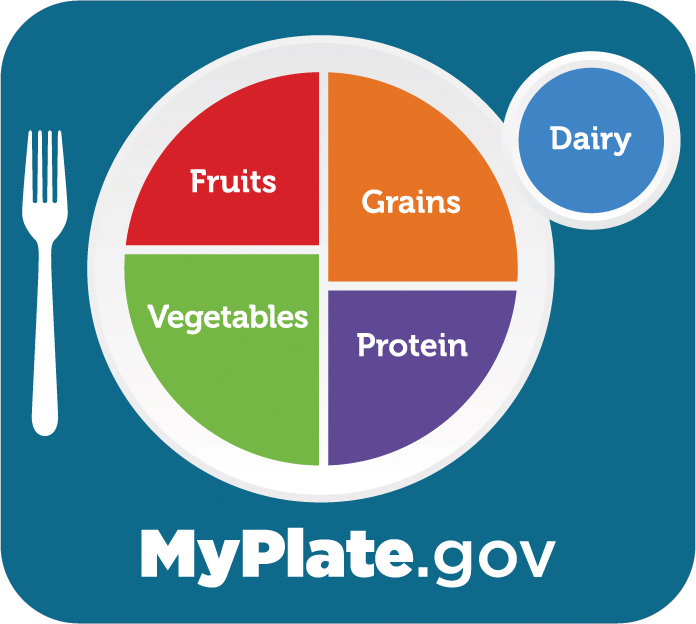
“Mac and cheese, cannoli, jelly and nut butter sandwiches, ice cream, cereal, and McDonald’s. Oh, and anything with Chick-fil-A sauce!”
That was my kindergartener’s response when I asked him to list his favorite foods. Proud mom moment right there. It is SUCH a good thing we don’t put kindergarteners in charge of their own nutrition.
I don’t think too many parents would have trouble realizing that a steady diet of my kid’s favorite foods would not make for a healthy kindergartener.
But what exactly are the current guidelines for children’s nutrition?
And what common tummy troubles should we be on the lookout for?
Lucky for us, I was able to sit down with Registered Dietitian Calee Taylor, MS, RD, LDN at Ascension Sacred Heart’s Studer Family Children’s Hospital to get some answers.
Ms. Taylor is a Pediatric Specialty Care Dietitian who works primarily with pediatric gastroenterology patients. She loves taking care of kids and helping them feel better when the food they’ve been eating might not work so well for their bodies. She helped me to decipher how best to keep my children’s diets on track.
What’s up with the food pyramid these days?
For starters, Ms. Taylor informed me that the food pyramid from my childhood has been relegated to the history books. Nutritionists now advocate for a general approach based upon the My Plate infographic:

This new model includes the five food groups – fruits, vegetables, grains, proteins, and dairy – but in different proportions and with different guidelines than in the past. You can head on over to the My Plate website for more information. There are also interactive games and activities for your kiddos.
What are proper portion sizes for my kids?
According to Ms. Taylor, we all have a built-in measuring guide to help us with this question: the palms of our hands! A good rule-of-thumb here is to shoot for servings the size of your child’s palm for grains, fruit, protein, and dairy, and up to two palms for veggies. As your child’s hands grow, so do their portion sizes.
What’s with all the snacks?
I swear, my kids would snack ALL DAY LONG if I let them. Schools and activities seem to have regular snack times built in, too.
Is this really necessary?
Ms. Taylor says that there is a time and place for snacks, but that time is not all the time. She says that if a child is going four or more hours between meals, a snack within that window would be appropriate. She also says that kids tend to be ravenous after a long day at school, so after-school snacks are a great practice. She would try to avoid giving your child snacks within an hour of a meal, though.
 When it comes to choices, Ms. Taylor recommends diversifying by mixing at least two food groups and including some protein in that combination. Pairs like vegetables + hummus, fruit + yogurt, or nuts + whole grains would be snack time winners.
When it comes to choices, Ms. Taylor recommends diversifying by mixing at least two food groups and including some protein in that combination. Pairs like vegetables + hummus, fruit + yogurt, or nuts + whole grains would be snack time winners.
Are my kids adequately hydrated?
Ms. Taylor says that the recommendations for fluids children drink (as opposed to free fluids coming from fruits, veggies, etc.) usually fall somewhere in the 24-32 ounces range but can vary depending on your child’s size and activity level. She cautions, though, that pushing too much water can cause your kids to lose their appetites, create disruptions in class from having to use the restroom too often, or contribute to bedwetting. She advocates for simply offering your children water when they are thirsty or have been playing outside rather than trying to meet specific fluid intake goals.
What if my kids prefer drinks other than water?
I think that most of us recognize that we shouldn’t be turning to drinks like soda to hydrate our kids, but milk and juice can be more of a gray area. Ms. Taylor says that the current AAP guideline is that juice should be off the table for children under the age of two. After that, children ages two to six can have up to four ounces, and those kids older than six can indulge in up to six ounces per day.
When it comes to milk, Ms. Taylor emphasizes that cow’s milk is still the best calcium source for humans. She encourages aiming for roughly 8-16 ounces of total dairy products for kids each day, including milk. However, milk is certainly not necessary. Calcium and vitamin D can be consumed from other sources, including many milk alternatives, which have enjoyed rising popularity in recent years. If you have a kid who prefers or needs milk alternatives, Ms. Taylor says that you’ll still want to shoot for about 8-16 ounces per day to meet your child’s nutritional needs.
What are common gastrointestinal issues experienced by children?
Allergies and food intolerances are some of the more well-known pediatric GI issues. Ms. Taylor says that kids with food intolerances tend to show mild symptoms like stomachache or bloating for a short period of time after eating certain foods. Allergic reactions to foods, on the other hand, are generally more severe.
Other pediatric GI issues she often sees in children include constipation, acid reflux, and Celiac disease. Parents may not even be aware that their children are experiencing these problems, especially since the symptoms can be different from child to child. For example, Ms. Taylor says that picky eating can sometimes indicate reflux issues. Bedwetting at older ages may indicate a problem with constipation, even if your child uses the restroom regularly.
What do you do if you suspect your child might have a GI issue?
Ms. Taylor suggests starting with your child’s pediatrician. She says that not only do you want to make sure that he or she is in the loop when it comes to your child’s health, but your child’s pediatrician may also be able to identify many GI issues and run lab work if necessary. A decision can be made from there about whether or not to refer you to a specialist. If your child has been complaining of GI-related symptoms for more than a week or two, Ms. Taylor says it might be time to make a call to your child’s pediatrician.
For now, check out the My Plate website for the most up-to-date information on childhood nutrition. Grab your kids a healthy snack if they’re hungry, and have them fill up those water bottles when they get thirsty. Talk to your child’s pediatrician if you have questions about your child’s GI health.
If that conversation leads you to Calee Taylor’s office, breathe easy. Your child is in great hands!













[…] registered dietician with two young boys. Anderson’s feed offers practical and science-based pediatric nutrition information. Many accounts share ideas for little people meals, but Anderson’s account goes beyond meal […]